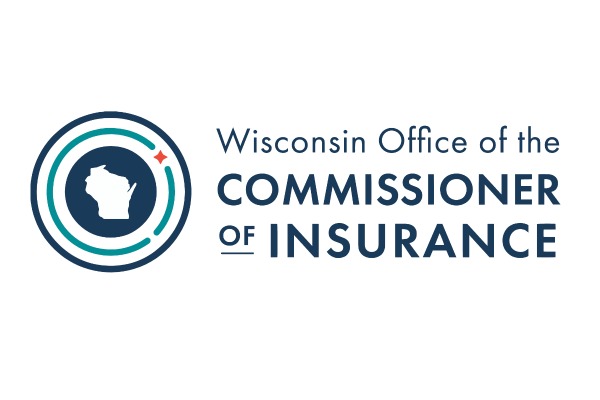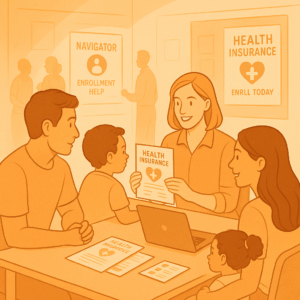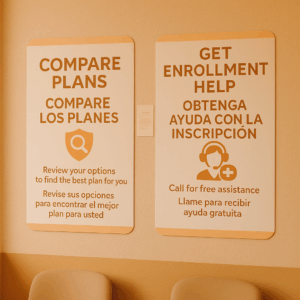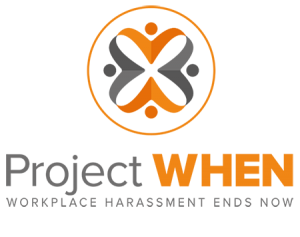How Strategic Communication Helped the State of Wisconsin Boost Health Insurance Engagement
 Clear, consistent communication is a cornerstone of successful public policy—especially when it comes to helping residents navigate complex systems like health insurance. In Wisconsin, the Office of the Commissioner of Insurance (OCI) has proven how data-informed messaging and grassroots outreach can drive real behavioral change in the individual health insurance market.
Clear, consistent communication is a cornerstone of successful public policy—especially when it comes to helping residents navigate complex systems like health insurance. In Wisconsin, the Office of the Commissioner of Insurance (OCI) has proven how data-informed messaging and grassroots outreach can drive real behavioral change in the individual health insurance market.
The 2022 Health Insurance Market Analysis offers compelling evidence: more residents actively reviewed their health plans, more switched to better coverage, and more uninsured individuals accessed affordable care. Behind this progress is a strategic, multi-channel communication effort that targets both underserved populations and the general public.
This case study examines how OCI’s approach to outreach and education has contributed to enhanced engagement, informed consumer choices, and increased access to healthcare across the state.
The Initiative: OCI’s Health Insurance Market Strategy
Grounded in Research
Each year, the Wisconsin OCI conducts an analysis of the state’s individual health insurance market to understand trends in enrollment, re-enrollment behavior, and gaps in coverage. The 2022 report revealed a striking insight: 75% of returning enrollees actively reviewed their plans, and 41% of them switched plans—up from 34% the previous year. This reflects not only better-informed consumers, but also the impact of intentional, accessible outreach that encouraged people to explore their options.
Multi-Agency Collaboration
The OCI partnered with enrollment assistance providers such as Covering Wisconsin, as well as federal and nonprofit stakeholders, to align messaging and maximize reach. Together, these entities supported Wisconsin residents through a combination of Navigator services, public campaigns, and online platforms like WisCovered.com.
Communication-Centered Program Activities
1. Targeted, Plain-Language Messaging
OCI’s communication efforts focused on de-mystifying the enrollment process, clarifying financial assistance options, and encouraging residents to shop around annually. The messaging strategy included:
- Culturally appropriate content tailored for underserved groups, including rural populations and communities of color.
- Simple calls to action like “Compare before you renew” and “You may qualify for lower-cost coverage—even if you didn’t before.”
- Use of relatable scenarios to illustrate savings and benefits of plan switching.
The tone was encouraging rather than bureaucratic—aimed at empowering people to take control of their health coverage decisions.
2. Local and Digital Outreach Channels
Outreach didn’t rely solely on top-down, state-level announcements. Instead, OCI invested in both traditional and digital media to meet people where they were:
- Billboards and radio ads in rural and suburban counties raised awareness about the availability of free enrollment help.
- Facebook and Google display ads linked residents directly to WisCovered.com and Navigator scheduling tools.
- Partnerships with community-based organizations ensured flyers and handouts were distributed through libraries, clinics, food banks, and job centers.
This diversified strategy helped build visibility and trust in places where government messages don’t always resonate.
Why It Worked
- Plain language reduced confusion, making it easier for residents to understand their options.
- Hyper-local messaging increased resonance, especially in counties with higher uninsured rates.
- Consistency across channels ensured that whether people saw a poster or clicked on a digital ad, the core message was the same.
Personalized Support Through Navigator Services
Enrollment Assistance with a Human Touch
Wisconsin’s Navigator program, run by Covering Wisconsin, plays a vital role in translating information into action. In 2022, the program doubled the number of consumers assisted during open enrollment compared to the prior year.
Navigators offered personalized guidance through:
- One-on-one virtual and in-person consultations.
- Step-by-step application help, including eligibility screening for subsidies and Medicaid.
- Follow-up support to help individuals complete enrollment or resolve issues with insurance carriers.
The program emphasized continuity of care, with Navigators serving as trusted contacts over time.
Community Feedback and Continuous Improvement
OCI gathered input from enrollment providers, county health departments, and residents themselves to assess messaging effectiveness and identify outreach gaps. Insights gained led to:
- More language-specific materials for Spanish, Hmong, and Somali speakers.
- Greater emphasis on plan comparison tools and financial calculators.
- Adjustments to ad placement based on web traffic and call center volume.
Why It Worked
- Human support made the process less intimidating, especially for first-time enrollees.
- Trusted messengers increased follow-through, particularly among those skeptical of government systems.
- Feedback loops ensured responsiveness, allowing campaigns to evolve in real time.
Measurable Outcomes and Communication Impact
1. Increased Active Engagement
- 75% of re-enrollees actively reviewed their plans, up from 70% in 2021.
- 41% of those who reviewed switched plans, an all-time high for the state.
2. Expanded Coverage
- Enrollment in ACA-compliant plans grew by 8% from 2018 to 2021.
- Navigator assistance requests more than doubled, showing improved awareness of available help.
3. Reduced Uninsurance and Improved Access
- In 2020, 47% of Wisconsin’s uninsured were eligible for subsidized Marketplace coverage.
- OCI’s messaging helped increase uptake among subsidy-eligible individuals, narrowing that gap in 2022.
 Takeaways: Lessons from Wisconsin’s Insurance Outreach
Takeaways: Lessons from Wisconsin’s Insurance Outreach
- Meet People Where They Are
From feed stores to Facebook, strategic communication works best when it adapts to local habits and environments.
- Simple, Empowering Messages Drive Action
Short, clear calls to action make a difference—especially when navigating complex systems like health insurance.
- Trusted Guides Matter
Navigator programs and partnerships with community groups help bridge the gap between awareness and enrollment.
- Data Should Drive Messaging
Enrollment trends, website clicks, and community feedback are valuable tools for refining communication strategies.
Conclusion: Communication as Coverage
The State of Wisconsin’s 2022 health insurance market analysis doesn’t just highlight statistics—it tells the story of how thoughtful, people-centered communication can help residents make informed decisions, find better coverage, and access the care they need. The OCI’s strategy shows that with the right mix of messaging, support, and outreach, public agencies can play a pivotal role in building a healthier, more insured population.
As other states look to reduce uninsured rates and improve Marketplace engagement, Wisconsin offers a replicable model: communicate clearly, listen actively, and support locally.
Ready to Elevate Your Agency’s Public Communication?
We understand the unique challenges state and local government agencies face—from complex issues to diverse community needs. Our comprehensive approach can help you transform the way you connect with constituents, improve transparency, and highlight the valuable work your agency does every day.
Interested in learning more? Reach out to us today for a consultation. We’d love to discuss how our services can support your goals and help you build lasting trust with the communities you serve.






